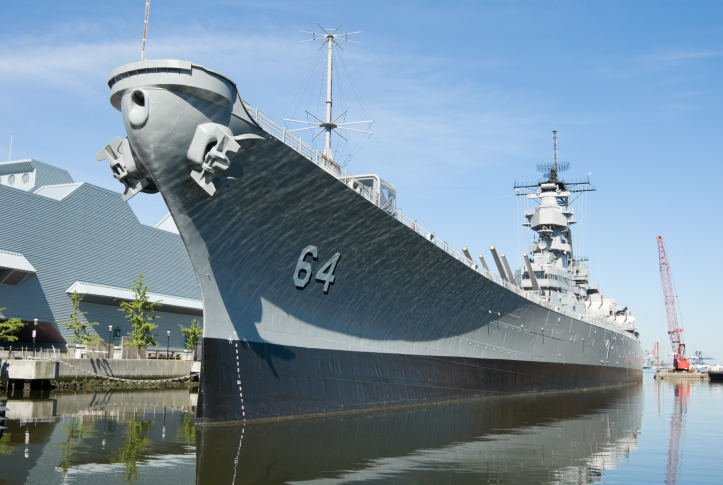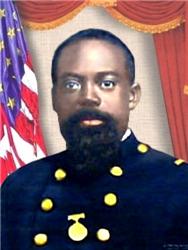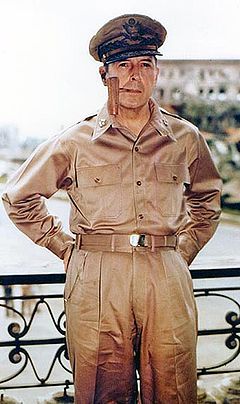
Norfolk, Virginia intrigued me during my visit and I would welcome hearing from anyone familiar with changes the city has undergone since my last visit.

How many of us knew that Sergeant William Carney, powerfully portrayed by Oscar recipient Denzel Washington in “Glory”, lies buried under a marble tombstone in a distant corner of a cemetery in Norfolk, Virginia? I, and I suppose many like me, certainly did not.
Sergeant Carney, a Norfolk native, and his men were members of the famed 54th Massachusetts Volunteer Regiment felled during the battle to capture Fort Wagner from Confederate forces on July 18, 1863. When the color bearer was killed, Carney picked up the colors and led the attack on the Fort, though he himself was wounded several times.
For his singular act of bravery, Carney became the first African-American to earn the Congressional Medal of Honor. In February (African-American history month), the city of Norfolk chose to honor Sergeant Carney by including his statute within the more than 250 historic sites that make up the Virginia Civil War Trails project. This was a powerful gesture – well overdue – because it identifies for all who visit Civil War sites, the only monument in the South (at that time) honoring African Americans who fought for the Union Army.
I was among a group of writers invited by the Convention Bureau of the City of Norfolk to the ceremony honoring Sergeant Carney and his men.
To many of us, Norfolk was simply another Navy port, much like San Diego. How mistaken I was!
Norfolk is another of those hidden jewels, worthy of serious consideration as a vacation destination. If you add Virginia Beach (20 minutes from Norfolk) and historic colonial Williamsburg, (50 minutes away), you would discover many of the wonders of the Chesapeake Bay.
Norfolk, a city known for its scenic waterways, thriving port, historic sites, and moderate climate, offers a complete vacation: sunny beaches, fine hotels, reasonable prices, an eclectic array of restaurants, waterfront concerts, harbor cruises, sporting events, ballet, opera, and symphony or theatrical performances.

In addition, there are several maritime museums, the MacArthur Memorial Museum, the Walter P. Chrysler Museum of Art, shopping, Civil War sites, Historic Williamsburg, Virginia Beach, and African American culture and history.
For you ex-Navy veterans, and those with maritime interests, there is the imposing presence of the Atlantic Fleet. It was the home of the world’s largest battleship, the USS Wisconsin. It may still be there. All of this is set against the backdrop of a city that has the feel of an emerging southern town that is very much part of the 21st century.
Arriving by air, my commute to center city from Norfolk’s expanded international airport, was only six miles. A number of major and regional carriers offer service to Norfolk.
In retrospect, my impression of Norfolk was that of a city actively planning its future while respecting its past. I was a guest of the Director of the Norfolk Convention and Visitors Bureau. For three days, they introduced me to the Norfolk many would never see, especially those from the American mid-West and West.
Several blocks from the Marriott sat one of several boutique hotels in the city: Tazewell Hotel and Suites, named to honor one of Norfolk’s most historic figures, Littleton Waller Tazewell. The honor is in the center of a revitalized downtown business and entertainment district. I loved the location, the stylish and comfortable rooms, the amenities, and its affordability. Then, the city offered more than 5,500 rooms among its hotels but I was seduced by the charm, the southern graciousness of the Tazewell staff, and the intimacy it offered.
The ardent student of World War 11 that I am, I was delighted to learn that two blocks away were the four buildings that comprise the General Douglas MacArthur Memorial Museum. The complex houses over 5,000 of the General’s books and over two million items of correspondence, reports, messages, photographs, motion pictures, and scrapbooks. For students of military history, be prepared to spend at least a half-day there.
Although General MacArthur was one of the country’s most controversial military figures, the museum’s library and archives have to rank as one of the most complete displays of personal World War II memorabilia and other historical materials of that era available today.
A visit to Norfolk, of any duration, would not be complete without taking in one of America’s top museums: The Chrysler Museum of Art with it world-class collection of 30,000 original works of art displayed in 55 galleries. The Museum’s Director of Public Relations took me on a personal tour of its exquisite collections – its unique Tiffany-glass collection; art and sculptures from African, Egyptian, Pre-Columbian, and Islamic and Asian Cultures.
Several groups of students were visiting as we hurried through and my escort told me that the museum and its staff serve as an educational resource for more than 80,000 children each year. The museum is a home for special exhibitions of art from Rembrandt to Andy Warhol, as well as a home for music, dance, poetry, theatre, the visual arts, and special community events. Our lightening-fast tour took over two hours.
Growing up in New Jersey, I heard my parents and their friends reminisce about the legendary Apollo Theatre in Harlem. Later, I learned of the Royal Theatre in Chicago. During this visit, I learned that Norfolk had its own Apollo: The Crispus Attucks Performing Arts Theatre and Concert Hall. The theatre is named for Crispus Attucks, a Black man killed at the Boston massacre, and one of the first heroes of the American Revolution.
For the local Black community, the theatre was a showplace for movies, vaudeville, local talents, and original plays. Designed in 1918 by an African-American architect, it was, according to the National Register of Historic Places, one of the first theatres of its kind to be completely designed, financed, and built by the Black community for the Black community.
This fact was a point of pride for Black Norfolkians. For 35 years, until 1953, all the best road shows out of Harlem found their way to the Attucks Theatre on Church Street in Norfolk. In its heyday, Cab Calloway, Bessie Smith, Nat King Cole, Lionel Hampton, Sam Cook, and a host of America’s Black musical giants, all performed there.
Moreover, the Attucks Theatre was more than a destination for entertainment. It was also a commercial complex for African-American businesses, an adjunct educational facility for Norfolk Public Schools, and a “platform for change” frequented by judges and other persons of note advocating social and political change in the local community. In 1953, the curtain came down for the last time.
Denise Christian, then Executive Director of Crispus Attucks Cultural Center, Inc. was among those who spearheaded the effort to secure seven million dollars in financing to completely renovate the theatre, to return it to some of its former glory. The restored Attucks would then function as more than just a theatre. It would be a multi-purpose center that served the Norfolk community and generate revenue through a variety of activities. If you are headed in that direction, Google Crispus Attucks Theatre to see if the project was completed. It may still be listed on the National Register of Historic Places and the Virginia Landmarks Register.
My host remembered my Italian experience and had a surprise for me: a visit to the Pantera Glass Studio Gallery on West York Street. For over an hour, I watched John Quillian, a master glassblower, create some of the most stunning glassworks I have seen since visiting Italy’s famed Murano Glass Factory in Venice. We got up close and personal; felt the heat from his gas-fired furnace while getting answers to all my questions.
Sampling of local and regional cuisine is an integral part of any vacation. Norfolk’s eclectic mix of ethnic and romantic restaurants offers something for the most discriminating palates. Perhaps the highlight of my dining experience was dinner at “Bobbywood” on Granby Street. Locally, it is known as “Hampton Roads’ most awesome restaurant.” It may have competition now. Our group of five worked our way through most of its gastronomic delights including pasta, seafood, and several meat dishes. Everything was great!
Bobby Huher, the chef-owner, was a cook on a submarine during a stint in the U.S. Navy. If his dessert creations aboard the ship were as creative and as tasty as the seven desserts he served our group (only three of us could actually eat them), the ship’s crew must have mutinied when he left. Although I did not see the bill, our host actually did not wince when it arrived. Doggy bags were definitely in order.
I came away with a greater appreciation for the Chesapeake as a desirable tourist destination because, for one thing, the logistics are simple: You can enjoy a perfect tourist triangle including Colonial Williamsburg, Virginia Beach, and Norfolk.
For visitors from America’s West and southwest, Norfolk prides itself on its ethnic diversity. The city hosts numerous cultural celebrations and outdoor festivals showcasing ethnic art, music, and food. Annual celebrations include Cinco de Mayo Festival, AFR’AM Fest, Juneteenth Celebration, Bayou Boogaloo & Cajun Food Festival, American Indian Festival, Reggae on The River, and the International Azalea Festival, and NATO Fest. Other choices are the Annual Town Point Jazz and Blues Festival and, the Annual Town Point Virginia Wine Festival. The list may be longer now. Unless you are in search of a tropical paradise, Norfolk offers something for most vacationers.
An interesting day trip would be a visit to the Hampton University Museum in Hampton, Virginia, the oldest art museum in Virginia. Spend some time – with your children – with the collections of prominent African-American institutions. Historically Black Colleges and Universities (HBCUs) are valuable resources as repositories of art and as centers of discussion on race and culture. This would be time well spent. To complete this historical journey into the past of African-Americans, visit Historic Williamsburg. It offers the best interpretative cultural site for African-American history in America.
For those seeking to combine a little business with pleasure, Norfolk’s Scope Cultural and Convention Center has 85,000 square feet of contiguous meeting space. And, the Waterside Convention Center, with its 36,000 square feet of meeting space, is attached on three floors to the Waterside Marriott Hotel. There may be other convenient meeting sites now. I mention what was the most prominent at the time of my visit.
Norfolk has a professional stage company. Broadway productions premiere here to work out the kinks. See the antique district; Stockley Gardens, the site of an annual outdoor, spring art festival; and, the Harrison Opera House, home of the Virginia Opera. After touring Harbor Park, take the Elizabeth Ferry across the Elizabeth to historic Portsmouth.
Spring is only a few months away and the subject of vacation becomes more than just a notion during the family discussion. If your vacation plans include a trip back east, think about Norfolk on the Chesapeake Bay. It is a walking city, ethnically and culturally diverse, rich in its maritime and colonial history, and, a place where life – past and present – is celebrated daily. Take the opportunity to become part of it.

